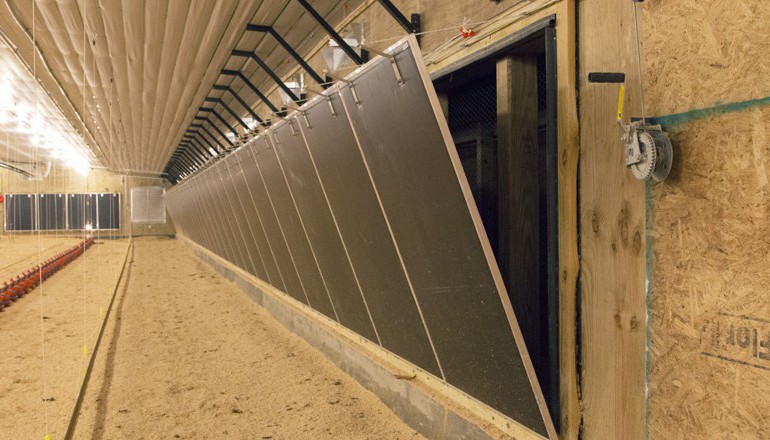EXECUTIVE SUMMARY
The key objective of this study was to determine the effect of additional access to water on nursery pig performance over a 28-day period. A total of 2,017 weanling nursery pigs were allotted to one of two treatment groups: Control (SC): Dual Standard Cup Waterers; or Test (WC): Additional, 4 Nipple Horizontal Water Bar. Pigs were fed according to the standard, three phase feeding program in place in this commercial unit, and were offered ad libitum access to water and feed throughout the trial. Providing additional access to water with the water bar incrementally increased water disappearance by 0.03 gal/pig. In addition, a positive response in average daily feed delivered (ADFD) was observed in Periods 1 and 3 (14.8% and 9.2% higher, respectively, P<0.05); and 5.2% overall (P<.10) for WB versus SC pigs. Moreover, ADG was 8.8% greater for WB versus SC pigs in Period 3. Overall, this study provides evidence that the provision of an extra water bar in the nursery phase can translate into 1.4 lbs more feed delivered per pig resulting in 1.1 lbs more gain per pig in 28 days.
OBJECTIVE
Given the well-documented correlation of feed and water intake, the objective of this trial was to determine if the provision of additional access to water would promote higher water consumption, and concomitant growth performance in weanling nursery pigs reared in a commercial environment over a 28-d period.
METHODS
Pigs (n=2017) were mixed-sex housed in a single room within in a 4-room, commercial wean-to-finish barn, with a shared feeder between adjacent pens. Pigs were equally allotted to 42 pens to yield a stocking density of 48 pigs/pen (144 sq. ft./pen) Pens were allotted to one of two treatment groups as follows: Control (SC): Standard Cup waterers with 2 per pen located on the right and left sides of each pen, or; Treatment (WB): Control + an additional horizontal, 4-nipple Water Bar .
Pigs were fed according to the standard, three phase nursery program routinely utilized in this commercial facility, and had ad-libitum access to feed and water throughout the 28-day trial. Water disappearance for the SC and WB groups was monitored via individual mainline water meters supplying water to the standard right and left-side waterers, and the additional water bar.
Pen weights were monitored at the initiation of the study (Day 0) and thereafter at 7, 14 and 28 days. Feed intake was monitored by total feed delivered to each shared pen. All mortalities and removals over the course of the trial were also recorded.
RESULTS
Table 1 shows the summary of water disappearance as measured by metered gallons of water. Observationally, the addition of the extra water bar increased water disappearance by 0.03 gal/pig/day or 17.6%. It was noted, however, that the overall consumption of water (as measured by water disappearance) was generally lower that expected for pigs of this age. In general, literature reports indicate nursery pigs typically consume 0.3 gal of water/lb of feed consumed.
Table 2 provides a summary of performance. A positive response in average daily feed delivered (ADFD) was noted in Periods 1 and 3 (14.8%, 9.2% higher, respectively, P<0.05); and 5.2% overall (P<.10) for WB pigs. This increase in ADFD translated into 8.8% higher ADG for WB pigs in Period 3, however no other improvements in ADG or G/ADFD were noted within the three periods or overall.

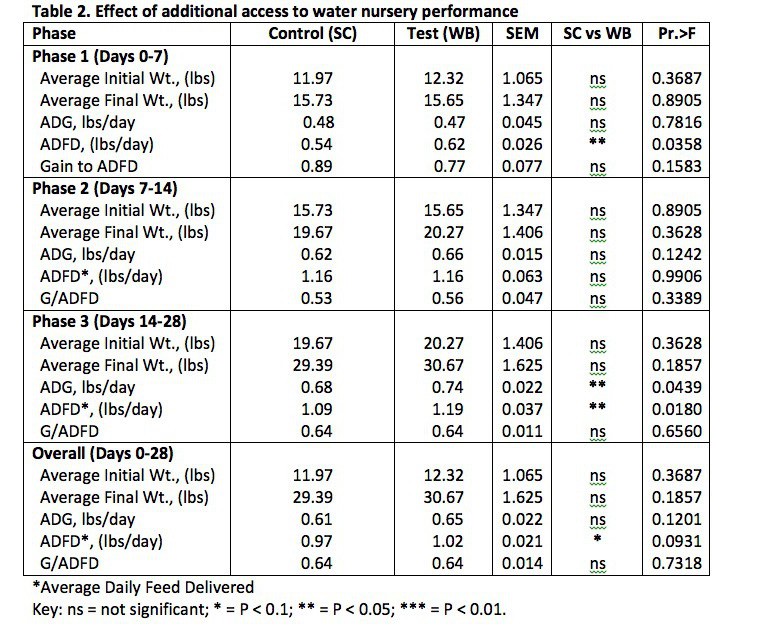 Conclusion & Recommendations
Conclusion & Recommendations
This study provides initial evidence that the overlay of a 4-nipple water bar to the standard dual cup waterer system to provide additional access to water, and promote increased water consumption has measurable impact on improved feed intake (as measured by total feed delivered).
Given the potential performance impact of improved feed intake together with the preliminary results of this trial, it is recommended that the study be repeated with the following modifications in order to more accurately assess the effect of increased access to water:
- Addition of feed weigh backs to the protocol to improve accuracy in feed intake monitoring.
- Collection of water disappearance data throughout the full study period.
- Consideration of calibration or replacement of water meters to improve accuracy of water disappearance monitoring.
- Randomization of the test variable (water bar) throughout the room to help better account for water line distances.
- Verification and standardization of waterer flow pressure to recommended levels for nursery pigs (8 fl. Oz./min)












 Україна
Україна Méjico
Méjico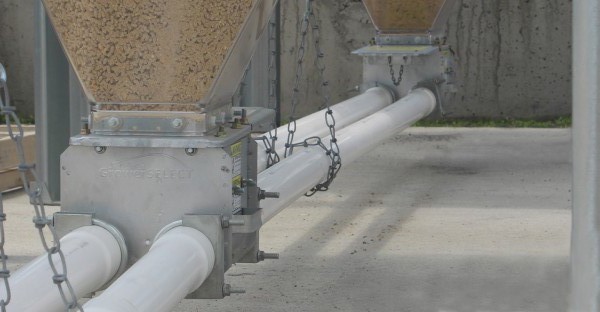
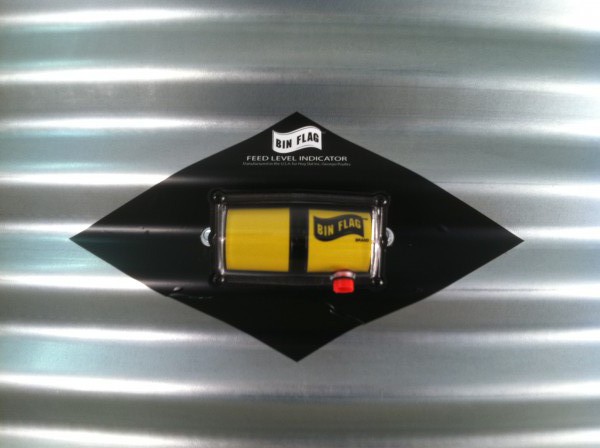 Bin Flag level indicator mounts on the outside of a bin rotating to yellow when feed level drops below postition.
Bin Flag level indicator mounts on the outside of a bin rotating to yellow when feed level drops below postition.
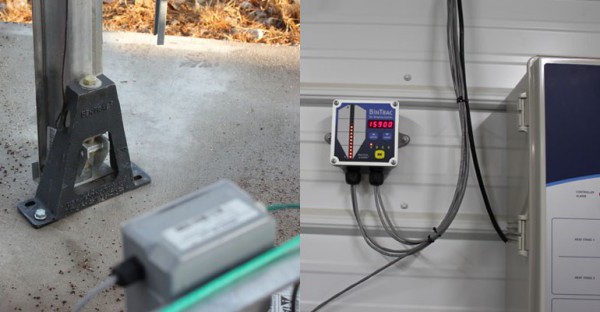 Load Cell and Summing Box mounted on a bin. BinTrac Pro Indicator.
Load Cell and Summing Box mounted on a bin. BinTrac Pro Indicator.
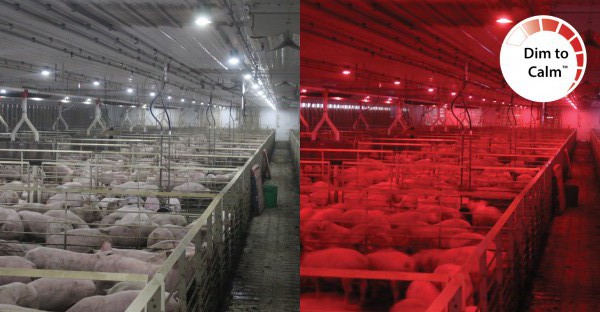
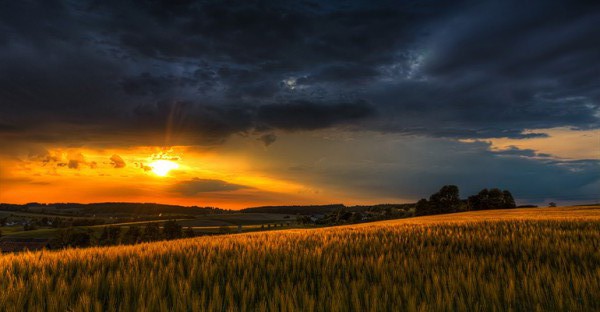 Dim-To-Calm lighting mimics sunrise to sunset photoperiods
Dim-To-Calm lighting mimics sunrise to sunset photoperiods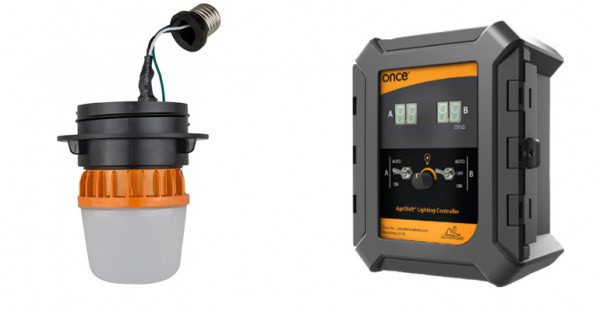 10 watt LED fixture with slave dimmer
10 watt LED fixture with slave dimmer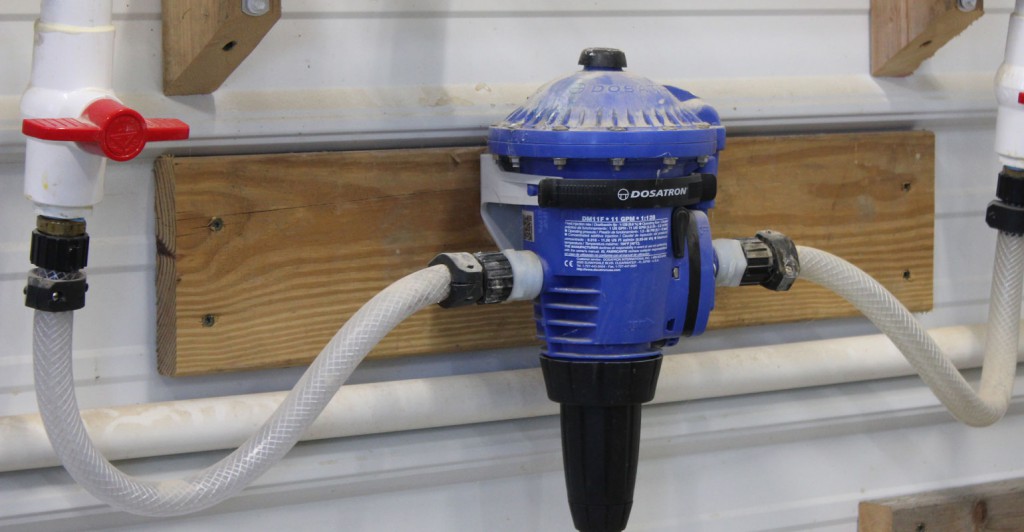
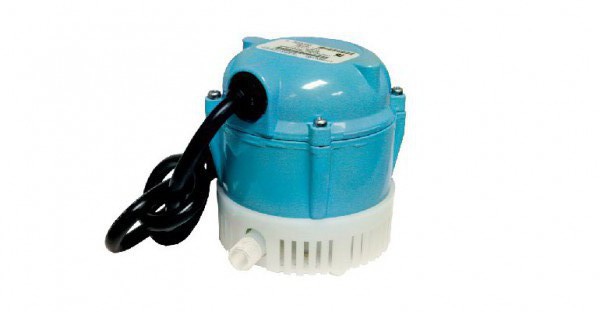 1.Use a mixing device in the stock tank...and that doesn't mean a paint stick!
1.Use a mixing device in the stock tank...and that doesn't mean a paint stick! 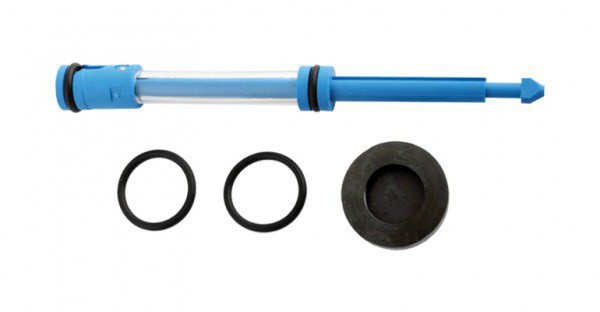 3."Click-Clack" doesn't mean it's working... replace the seals.
3."Click-Clack" doesn't mean it's working... replace the seals. 

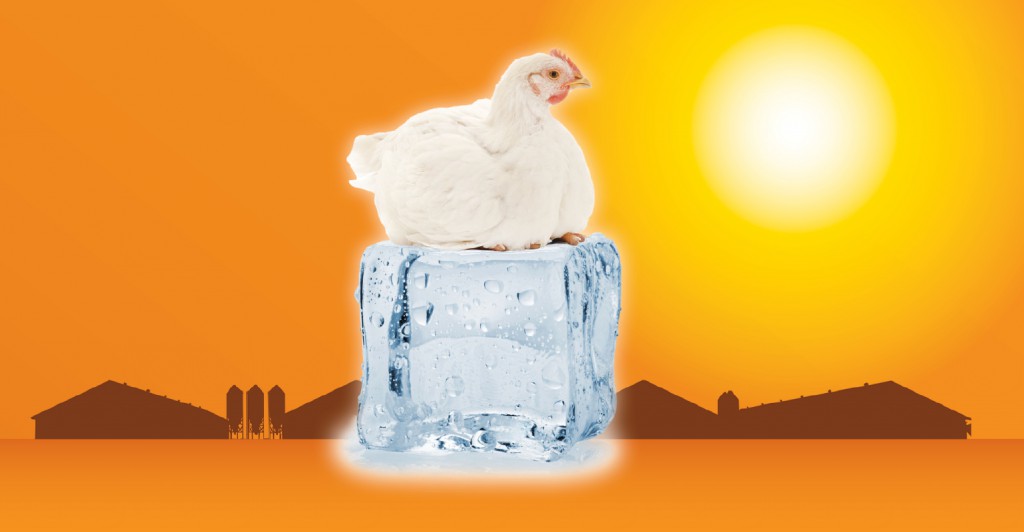
 Sprinkling encourages bird migration to feed and water
Sprinkling encourages bird migration to feed and water GrowerSELECT control with sprinkler head assemblies
GrowerSELECT control with sprinkler head assemblies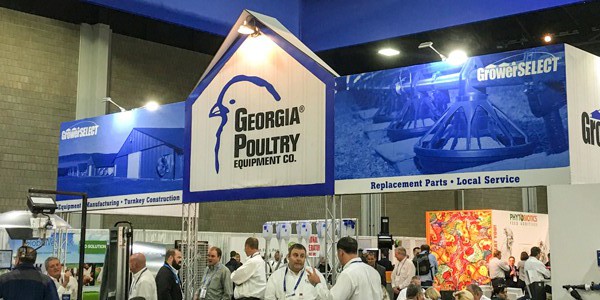 Georgia Poultry booth at 2017 IPPE show
Georgia Poultry booth at 2017 IPPE show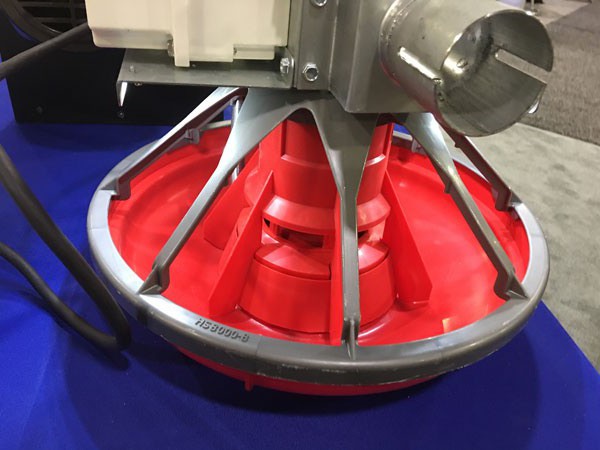 Classic Flood Light Kit illuminates control pan to encourage bird activity.
Classic Flood Light Kit illuminates control pan to encourage bird activity. Six, long-lasting LED lights.
Six, long-lasting LED lights.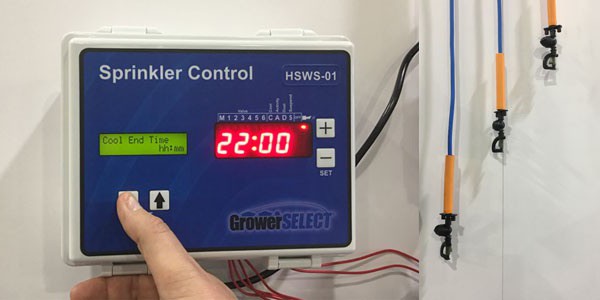 GrowerSELECT sprinkler control with drop assemblies.
GrowerSELECT sprinkler control with drop assemblies. Hog Slat bins feature the industry's heaviest galvanized coating.
Hog Slat bins feature the industry's heaviest galvanized coating.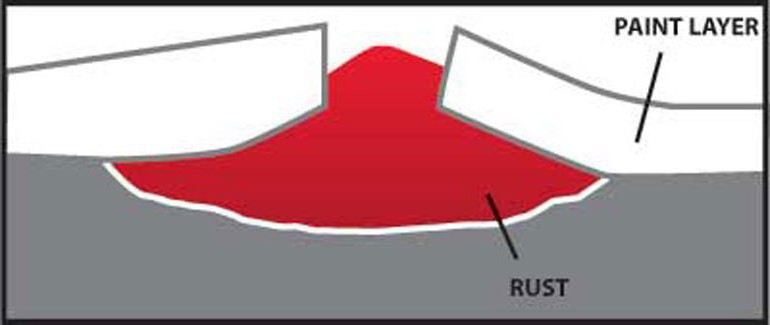 Paint coating protects steel from elements until damaged.
Paint coating protects steel from elements until damaged.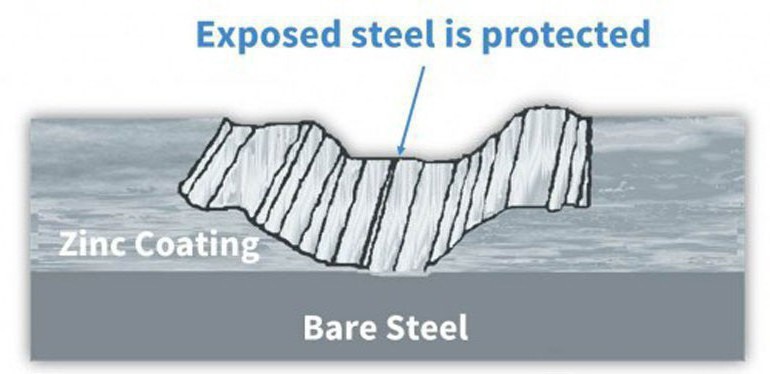 Galvanized coatings protect steel even when damaged.
Galvanized coatings protect steel even when damaged.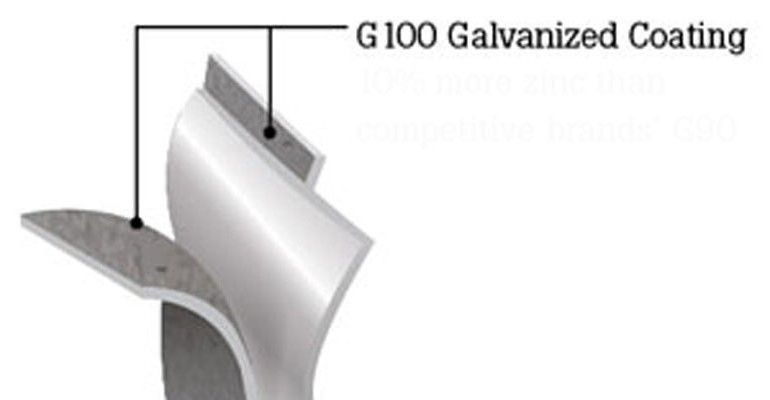 Heavier G100 galvanized coatings offer 10% longer service life.
Heavier G100 galvanized coatings offer 10% longer service life.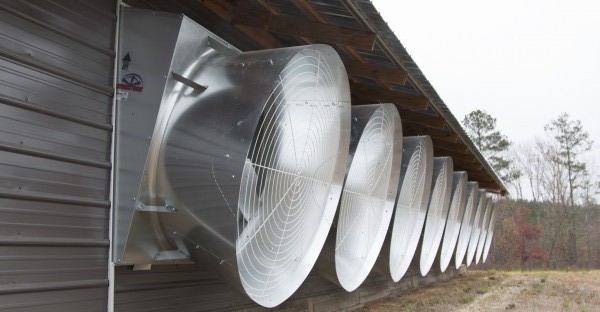
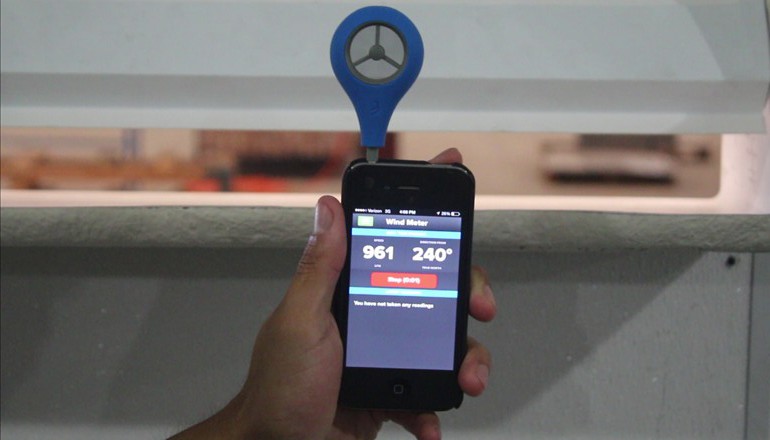 Inexpensive
Inexpensive